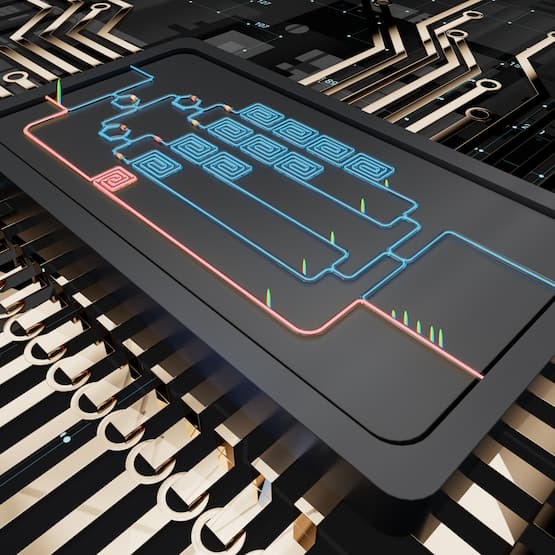Researcher from Monash University, RMIT, and the University of Adelaide have developed an accurate method of controlling optical circuits on fingernail-size photonic integrated circuits (PICs). The development builds on previous work by the team, in which it created what it said was the world’s first self-calibrated photonic chip.

Graphical representation of a photonic integrated circuit. Courtesy of Monash University.
Mike Xu, a Monash University professor and research fellow, said, “We’ve added a common reference path to the chip, which enables stable and accurate measurements of the lengths (phases, time delays) and losses of the ‘workhorse’ paths.
“By inventing a new method, the fractional delay method, we have been able to separate out the wanted information from the unwanted making for more precise applications.”
Previously, chips have been measured and calibrated by connecting to complex and costly external equipment — a vector network analyzer. However, the connections to it introduce phase errors, caused by vibrations and temperature changes.
By putting the reference on the chip itself, the measurement is immune to these phase errors.
Arthur Lowery, Australian Research Council Laureate Fellow from the department of electrical and computer systems engineering at Monash University, said, “In our earlier work, we used the ‘Kramer’s Kronig’ method to remove unwanted errors from desired measurements, but the fractional method requires far less optical power for calibration for a given accuracy. This means that we can get reliable measurements of the chip’s status, so [we] are able to accurately program it for a desired application, such as pattern recognition in an optical computer, or squeezing extra capacity from an optical communications network.”
The work complements research that began in 2020 with the development of an optical microcomb chip, which was able to transfer 30 Tbit/s — 3× the record data for Australia’s entire National Broadband Network. In the next phase of development, within the newly announced ARC Centre of Excellence for Optical Microcombs and Breakthrough Science (COMBS), this research team will be exploring how photonic chips can use many wavelengths to achieve ultrafast information processing and machine intelligence.
The research was published in Optica (www.doi.org/10.1364/OPTICA.470483).